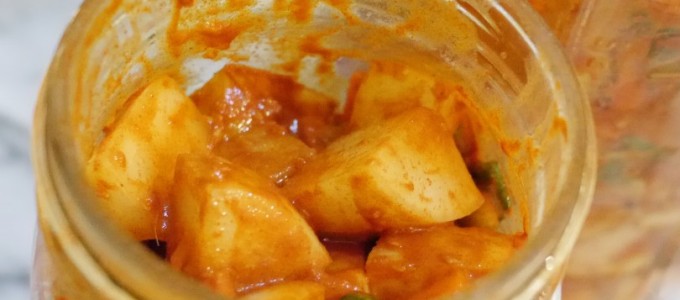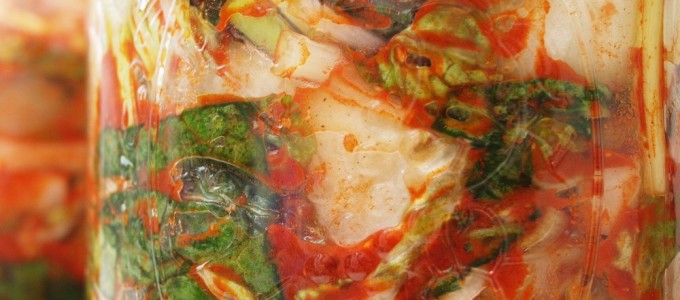I like most pickles. Obviously. But if I had to compile a list of four or five favorites — of the sorts of pickles I couldn’t do without — kkakdugi kimchi, or kimchi made from big honking radishes, would definitely rank. I’ve talked about them here before. In this other post about pickled daikons, I believe I said that because my preparation owes so much to Lauryn Chun and to Maangchi’s fabulous Korean food blog, I probably wouldn’t be posting a version of it here.
But that was then, and this is now. And in the meantime, I’ve changed my mind.
I found myself in the produce aisle at the grocery yesterday, staring at some very pretty, very large daikon radishes. And I thought to myself: I want kkakdugi! And then I thought to myself: since I’m going to make it anyway, I might as well make enough to share.

